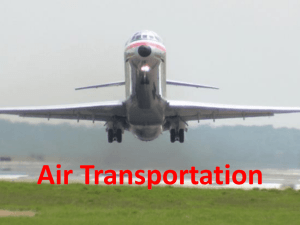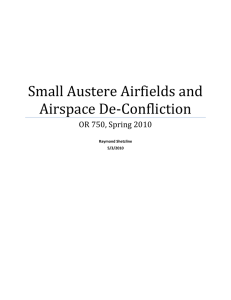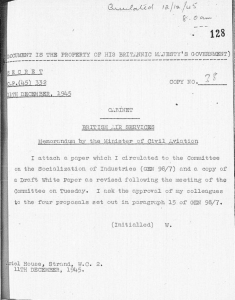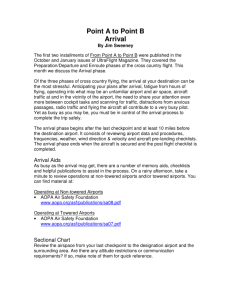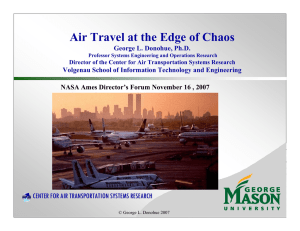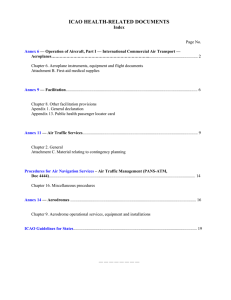The Pricing Commission Just another monopoly with no competition
advertisement
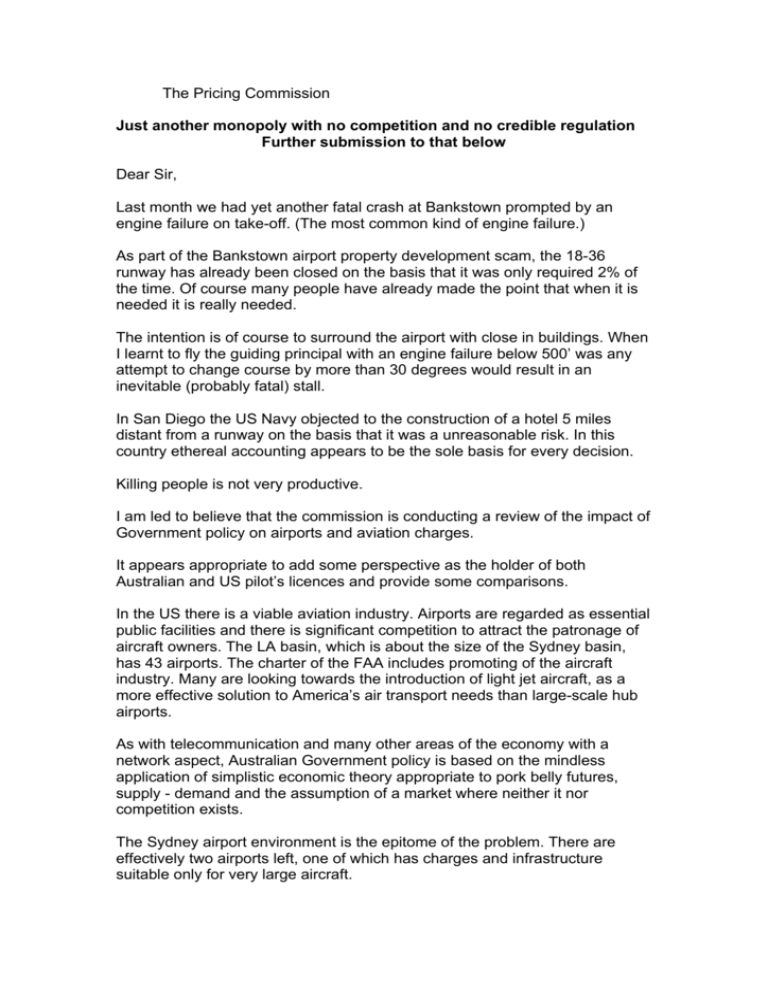
The Pricing Commission Just another monopoly with no competition and no credible regulation Further submission to that below Dear Sir, Last month we had yet another fatal crash at Bankstown prompted by an engine failure on take-off. (The most common kind of engine failure.) As part of the Bankstown airport property development scam, the 18-36 runway has already been closed on the basis that it was only required 2% of the time. Of course many people have already made the point that when it is needed it is really needed. The intention is of course to surround the airport with close in buildings. When I learnt to fly the guiding principal with an engine failure below 500’ was any attempt to change course by more than 30 degrees would result in an inevitable (probably fatal) stall. In San Diego the US Navy objected to the construction of a hotel 5 miles distant from a runway on the basis that it was a unreasonable risk. In this country ethereal accounting appears to be the sole basis for every decision. Killing people is not very productive. I am led to believe that the commission is conducting a review of the impact of Government policy on airports and aviation charges. It appears appropriate to add some perspective as the holder of both Australian and US pilot’s licences and provide some comparisons. In the US there is a viable aviation industry. Airports are regarded as essential public facilities and there is significant competition to attract the patronage of aircraft owners. The LA basin, which is about the size of the Sydney basin, has 43 airports. The charter of the FAA includes promoting of the aircraft industry. Many are looking towards the introduction of light jet aircraft, as a more effective solution to America’s air transport needs than large-scale hub airports. As with telecommunication and many other areas of the economy with a network aspect, Australian Government policy is based on the mindless application of simplistic economic theory appropriate to pork belly futures, supply - demand and the assumption of a market where neither it nor competition exists. The Sydney airport environment is the epitome of the problem. There are effectively two airports left, one of which has charges and infrastructure suitable only for very large aircraft. Bankstown was sold on the basis of its property development potential. Just to make sure there was no danger of competition Camden and the about to be closed Hoxton Park were sold too. Clearly any aviation use cannot compete with the high values of the Sydney property market. Indeed that is certainly true of the adjacent public roads, the golf course or river front public park. The reason that these assets have not met a similar fate is not that the Hume Highway could not be redeveloped for high rise, it is simply that it is politically impossible and self evidently stupid. Bankstown however commands a further premium, since it appears exempt from the laws that prevent inappropriate development because of its impact on the local environment. Eliminating all aviation use is clearly in the financal interests of the new owners. The situation around Sydney for aviation in general is dysfunctional. Aeropelican the Newcastle commuter airport is the object of a lakefront property development and has ceased operation. Two military-civilian airports are effectively no-go areas for small aircraft. Williamtown prohibits almost all private use. Nowra has 60 cubic nautical miles of restricted airspace. (The Australian navy has not had any fixed wing combat aircraft since they scrapped their aircraft carrier 30+ years ago.) North Island, San Diego home airfield of the US Pacific Fleet (about 1,000 combat aircraft and half a dozen aircraft carriers) has no restricted airspace, just radar surveillance. BOTTOM LINE: Someone needs to put an end to this bureaucratic farce. Monopolies have to be controlled and Bankstown is one of them. That’s why government was invented, to control things like printing money and providing essential services. Chris Reilly






